The Samson Meteorite is a Cheap and Slick Way to Upgrade Your Recording Quality
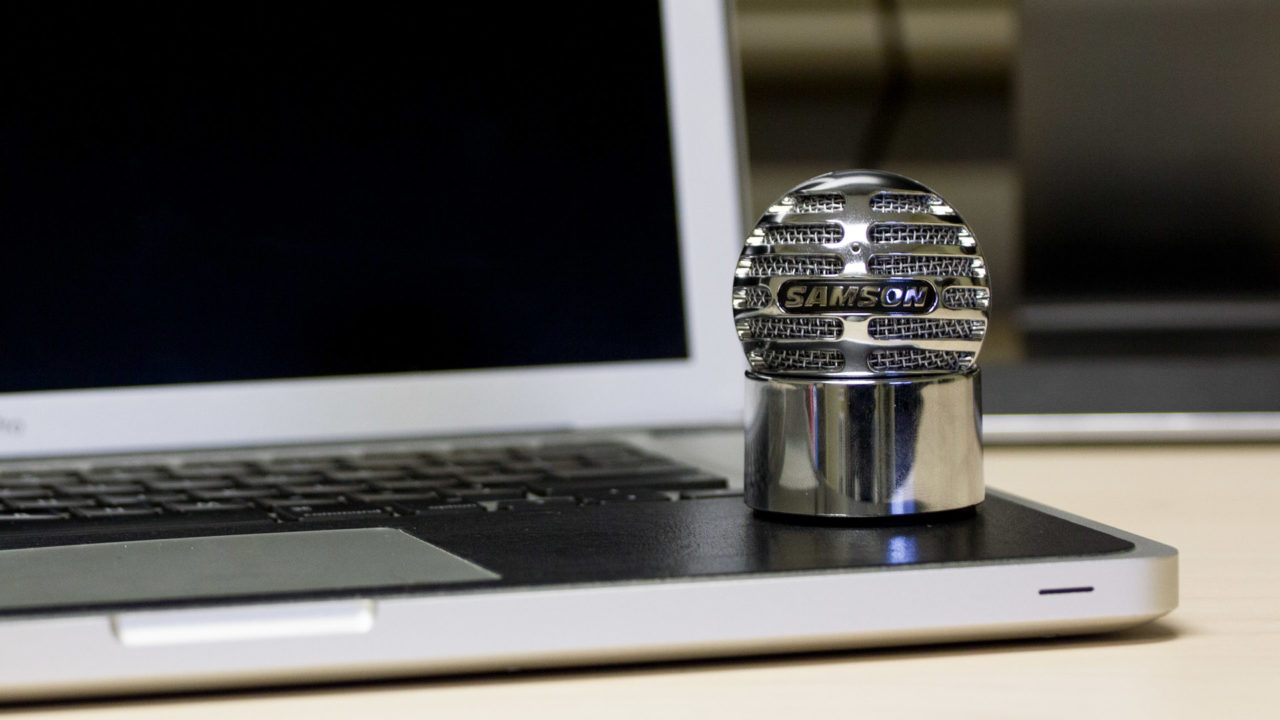
Almost all laptops, tablets, and all-in-one desktops now include built-in microphones, which are adequate for the needs of most users. But a huge market of inexpensive USB microphones has cropped up to cater to those looking for just a bit more quality and functionality for Skype calls, podcast recordings, and interviews. One recent addition to this market is the Meteorite, a tiny USB condenser microphone from Samson Technologies, a company known primarily for high-end audio gear and accessories. We had an opportunity to review the Meteorite and found that it offers a notable upgrade over built-in microphones. Read on to find out if you should add the Samson Meteorite to your equipment bag.
Box Contents & Setup
The Samson Meteorite comes packaged in a small cardboard and plastic box containing the spherical microphone, attached 3-foot USB cable, and magnetic stand. The magnetic stand lets the user position the meteorite at the optimal angle for virtually any recording environment. You can use the microphone without the stand, but its spherical shape makes it conducive to rolling around on the desk, which will likely degrade the recording quality and introduce unwanted noise.
As the Meteorite is a plug-and-play USB device, there are no drivers or other accessories required. The only other item accompanying the microphone in the box is a simple quick start guide, which most users will find unnecessary.
Once plugged in to your computer (we tested the microphone with a 2011 15-inch MacBook Pro running OS X Mavericks), the Meteorite is recognized immediately by OS X or Windows, and universal drivers are installed if necessary. From there, it’s just a quick trip to the operating system’s audio settings to configure the Meteorite as the default input.
Technical Specifications
Out of the box, the first thing you’ll notice about the Samson Meteorite is that it is tiny. The smaller cousin of Samson’s well-reviewed Meteor microphone, the Meteorite checks in at about two inches wide and 2.5 inches tall (50mm x 67mm), weighing a mere 0.26 pounds (118g). This makes it ideal for portable recording, as it can easily fit in a travel bag, purse, or even your pocket.
Looking to the Meteorite’s performance, you’ll find a unidirectional microphone with a cardioid pattern. This makes it ideal for recording speech, such as VoIP calls, podcasts, or video voiceovers. The microphone’s music recording capabilities are also advertised by Samson, but you’ll want to limit it to single instruments located directly in front of the microphone, like a guitar solo, as the cardioid pattern won’t perform well with a wide soundstage.
The Meteorite’s 14mm diaphragm can handle a frequency response of 20Hz to 20kHz with a maximum sound pressure level (SPL) of 120dB, and a maximum sample and bit rate of 48kHz/16-bit. The Meteorite is also bus powered, requiring a USB port capable of supplying 50mA at 5V, which most modern computers and tablets can provide.
Design & Usage
Like its predecessor, the Meteor, the Samson Meteorite has a slick retro look. Encased almost entirely in shiny chrome, the microphone looks like a gadget you’d find in Dick Tracy’s arsenal. I personally find the Meteorite’s aesthetic to be attractive and charming, but this is one microphone that will definitely stand out, despite its diminutive stature.
Once you’ve plugged the USB cable in to your PC or Mac, a small blue light on the face of the Meteorite lets you know that power is flowing. As you record, the blue light will flash red if your input is too loud, a useful feature that can help you make adjustments on the fly to prevent distortion.
We primarily tested the Samson Meteorite with a MacBook Pro, but also briefly connected it to our test PC running Windows 8.1. In both cases, we had no trouble getting the microphone to be recognized by the operating system and any apps that support audio input. Specifically, we experimented using the Meteorite with Skype, FaceTime, Adobe Audition, and Final Cut Pro.
In terms of audio quality, the Meteorite is notably better than the built-in microphone on the 27-inch Thunderbolt Display connected to our MacBook. The cardioid pattern, larger diaphragm, and better frequency response provided a clearer, smoother, and all around superior recording.
We prepared a demo video to better convey the Meteorite’s quality. In the video, we compare the Meteorite to the built-in mic on the Thunderbolt Display, and to a recording made with the Heil PR-40. The latter comparison is not meant to be a “fair fight” — the Heil PR-40 is a professional-grade dynamic studio recording microphone with a price more than six times that of the Meteorite — but it’s the microphone that we use day-to-day here at TekRevue and we hope that it provides a sort of “best case” baseline, helping you judge exactly what you can expect if you’re thinking about stepping up to more expensive audio equipment.
Check out the video, embedded below, which compares the three microphones with a reading of a passage from Edgar Rice Burroughs’ 1917 novel A Princess of Mars. Note that the audio in the video is untouched, recorded directly off of the microphones into Adobe Audition and output as lossless AIFF files to Final Cut Pro for assembly. The only change to the audio occurred in the final conversion of the video for upload to YouTube. As such, you could likely get better quality out of all three microphones with a little post-processing, but the demo below provides the clean baseline you can expect by default.
[youtube https://www.youtube.com/watch?v=beseUU7pW0M]
If you can, listen to the video with high quality speakers so that you can better hear the difference. From our perspective, the Samson Meteorite provided a much clearer sound. It’s nowhere near the quality of the Heil PR-40, of course, but it makes the Thunderbolt Display’s microphone seem terrible by comparison, as it eliminates a lot of the room noise and produces a richer recording.
Tablet Usage
We’ve thus far focused on using the Meteorite with a PC or Mac, but you can also use it with your iPad, provided you have Apple’s $30 USB Camera Connection Kit. In brief testing, we were able to use the Meteorite with FaceTime on our third-generation iPad, and we also experimented a bit with GarageBand for iOS. A Samson Meteorite coupled with an iPad would make a compelling setup for mobile podcasting, as long as you only want to record one or two people sitting directly in front of the microphone.
We didn’t have access to an Android tablet during our testing period, but we were able to use the Meteorite with ARM-based Windows RT on a Surface 2 tablet, and the setup and usage process was just as seamless as Windows 8.1 on our desktop PC. Everyone wants small and light tablets, and the Meteorite’s tiny dimensions and weight make it a great tablet companion.
Drawbacks
Despite my overall favorable impression of the Samson Meteorite, there are a few drawbacks that keep it from being a perfect portable microphone. The first is the integrated USB cable. Now, this may not be a drawback from the perspective of all users; some may prefer the integrated cable that can’t get lost. But I think that a detachable cable, like the one found on the slightly larger Samson Meteor, would make the Meteorite more versatile. The microphone’s included 3-foot cable should suit most users, but the option to use a cable that is exactly as long or short as I want is usually preferable to the convenience of an integrated cable. Such a design also ensures that I could continue to use the microphone with a replacement cable if the original cable became damaged; no such luck with an integrated cable (unless you’re into DIY cable repairs).
The second potential drawback is the magnetic stand. On one hand, it’s great that the stand allows users to pivot and position the microphone to the perfect angle. On the other hand, however, the stand will easily detach from the microphone when the Meteorite is tossed in your bag, leading to unnecessary digging around to find it beneath the rest of your equipment. A design that allowed for tilt and rotation, but also permanently secured the mic and stand together may have been a better option.
Conclusion
It was clear from our time testing the Meteorite that it is notably superior to the built-in microphones found on modern laptops and displays. The retro design may not be to everyone’s liking, and a detachable USB cable would have been appreciated, but these are minor complaints against an otherwise very good product.
With an MSRP of $60, but a current street price of about $40, the Meteorite is an affordable way to greatly enhance the quality of your computer and tablet recordings. The Meteorite won’t satisfy high-end users, but those who frequently use services like Skype and FaceTime, or want to start recording podcasts or YouTube videos, can’t go wrong with picking up this microphone, and its small size makes it easy to fit into any desktop or mobile setup.
You can pick up the Samson Meteorite for around $40 now at retailers like Amazon and Best Buy. It’s available in both chrome (as reviewed) and white finishes.




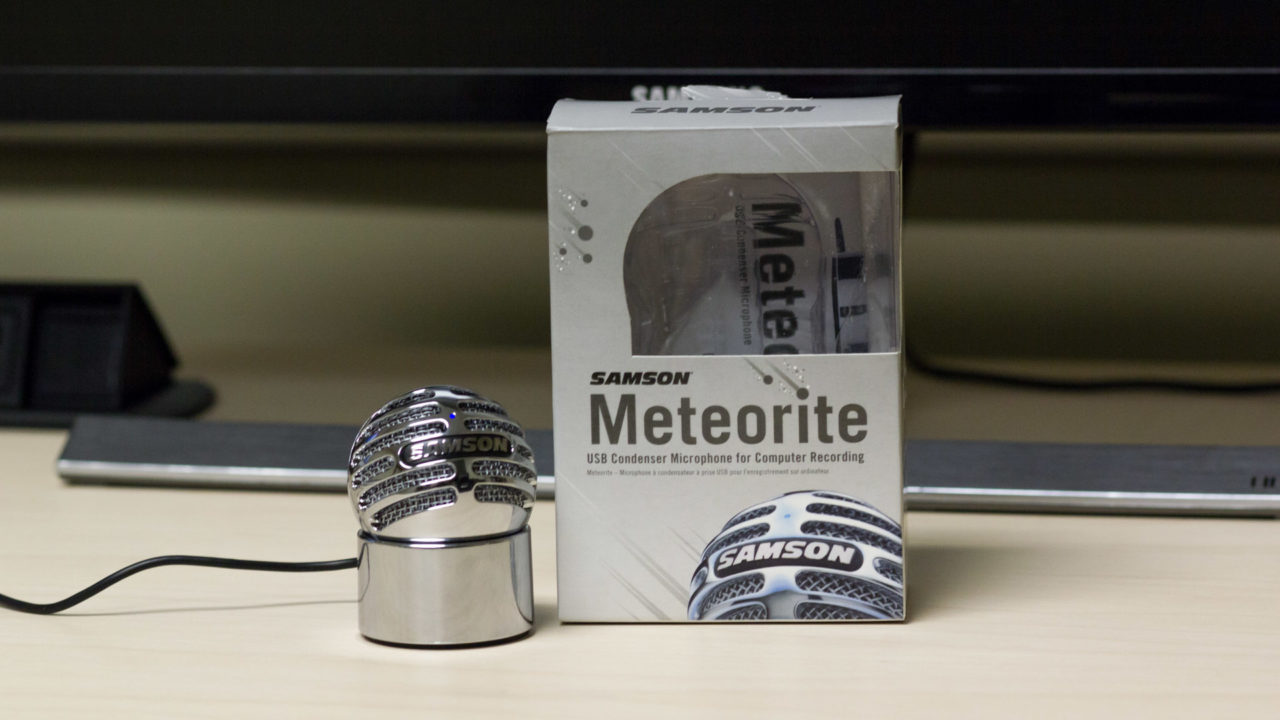
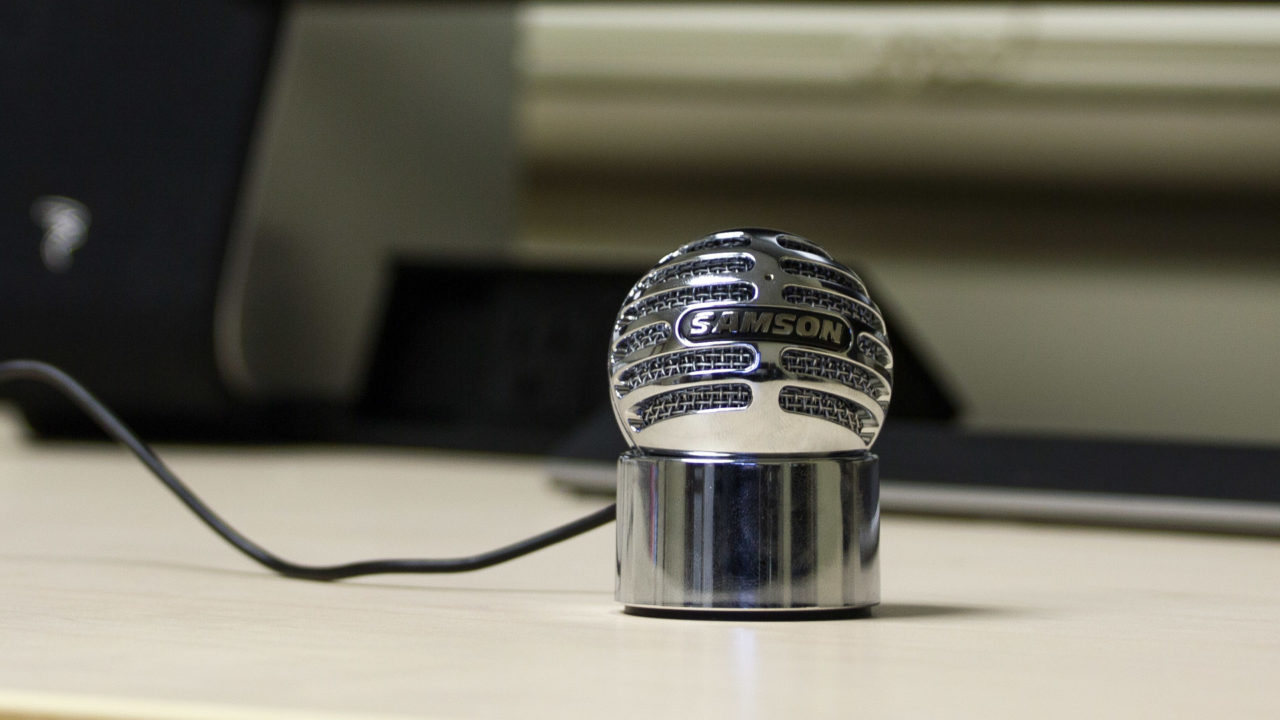
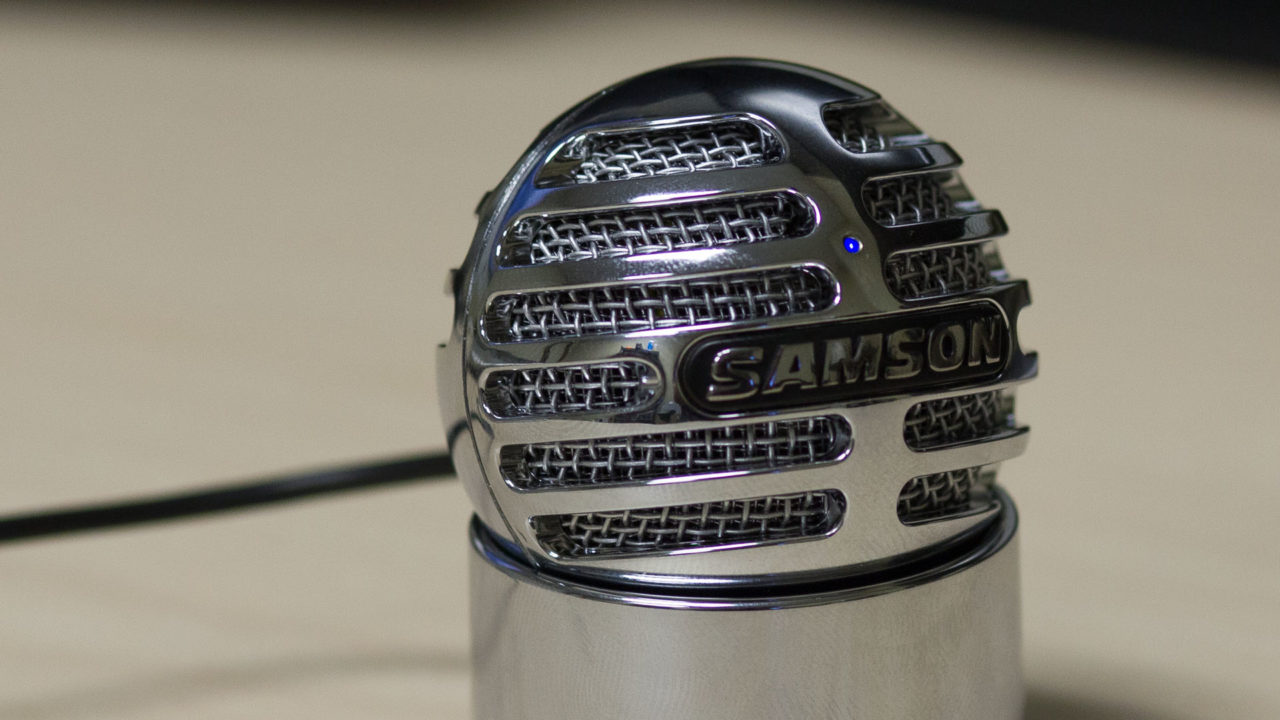
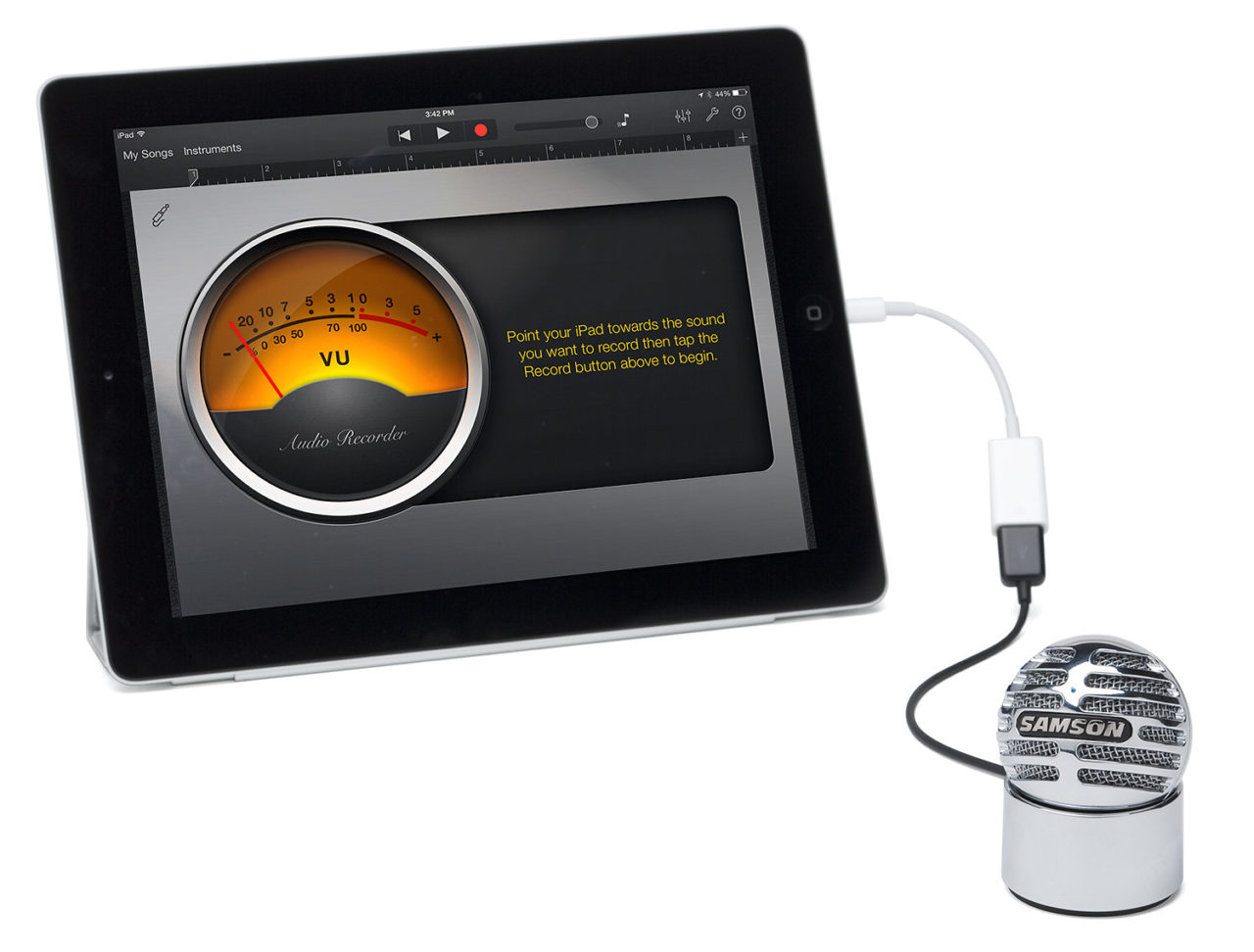
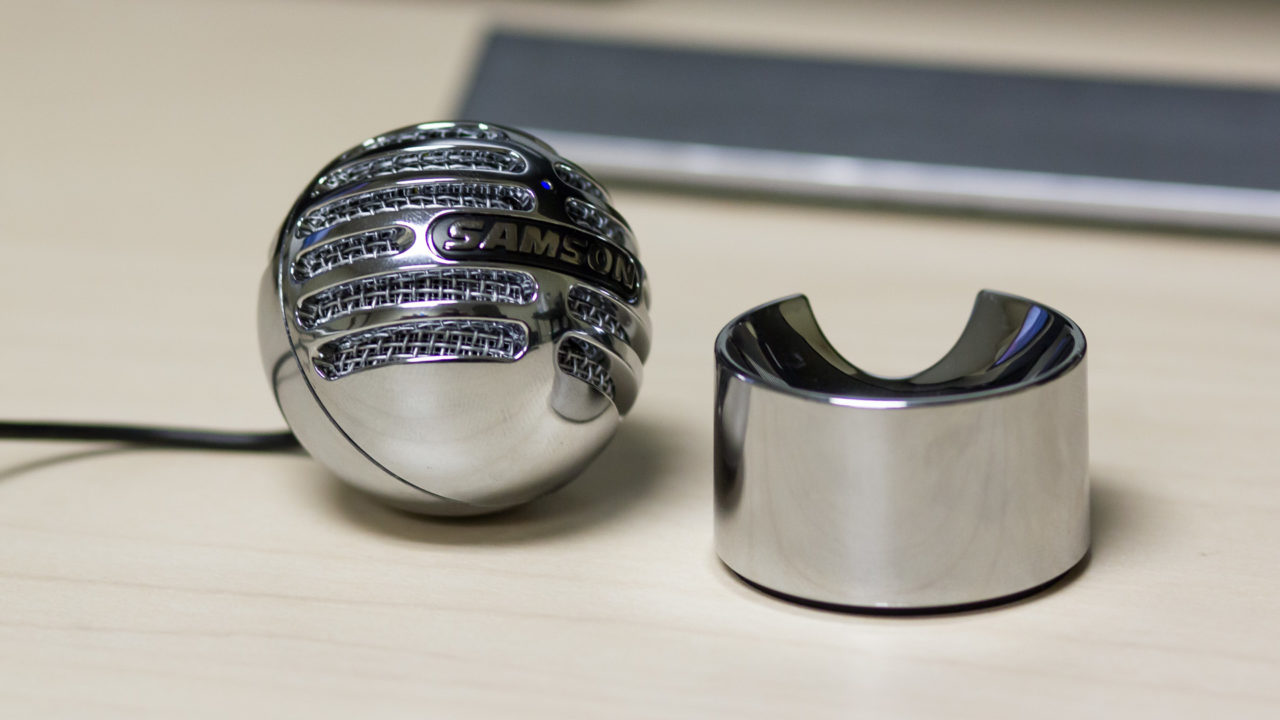
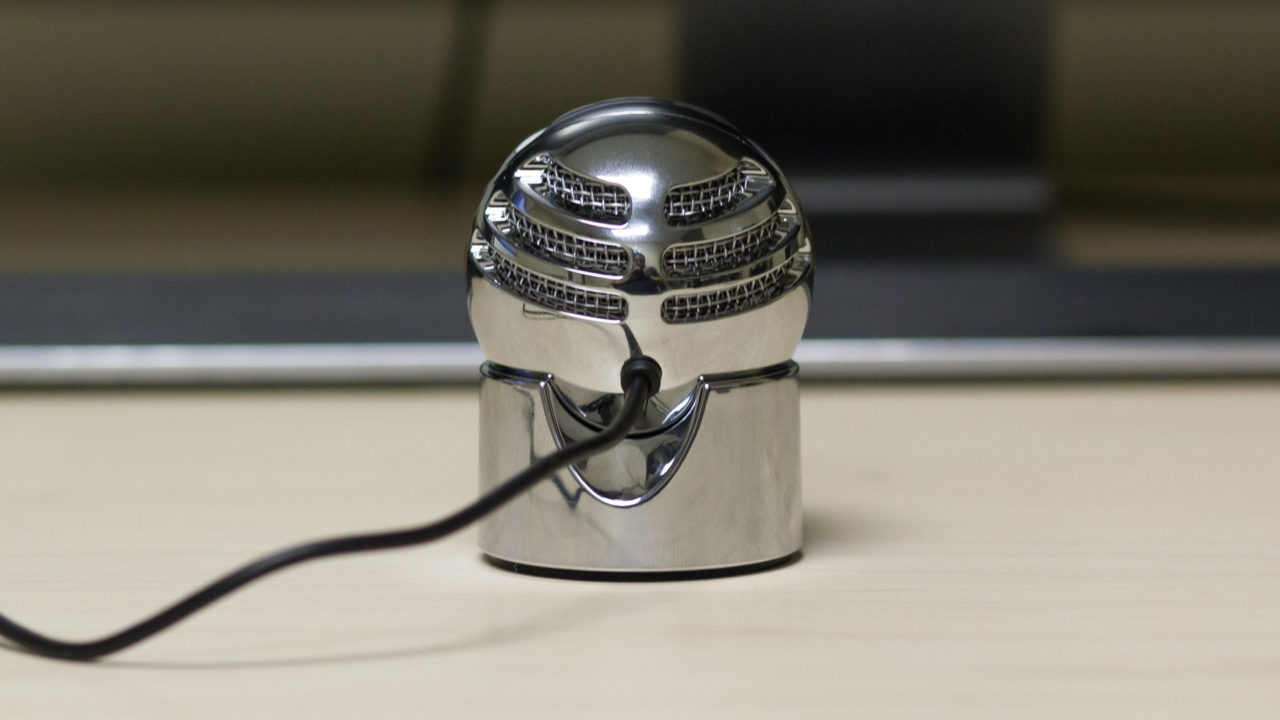



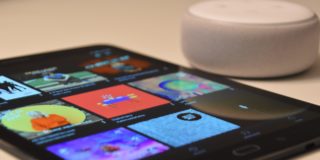
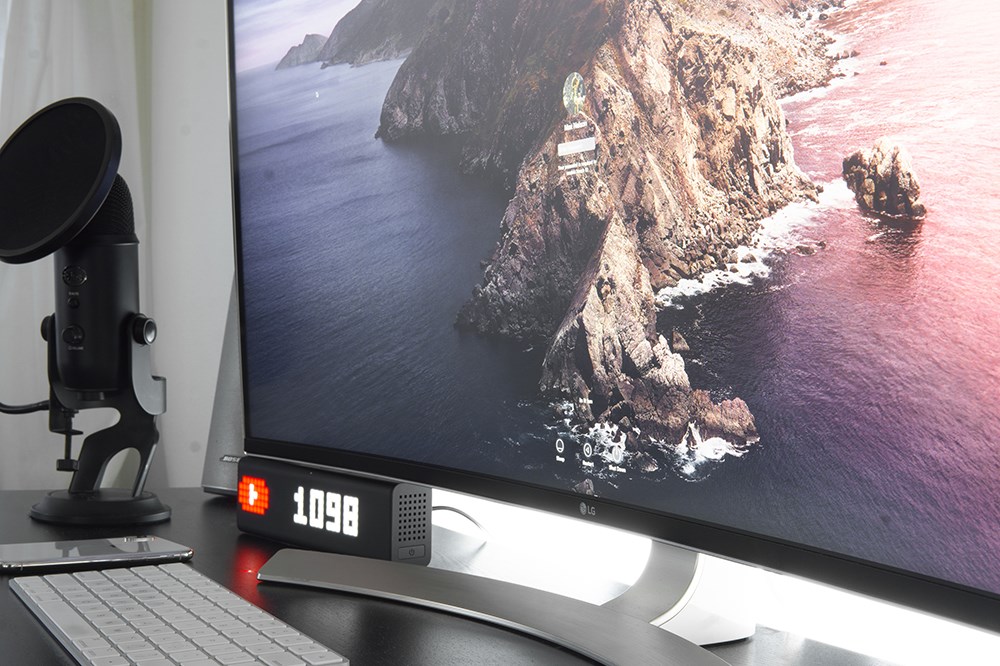







One thought on “The Samson Meteorite is a Cheap and Slick Way to Upgrade Your Recording Quality”